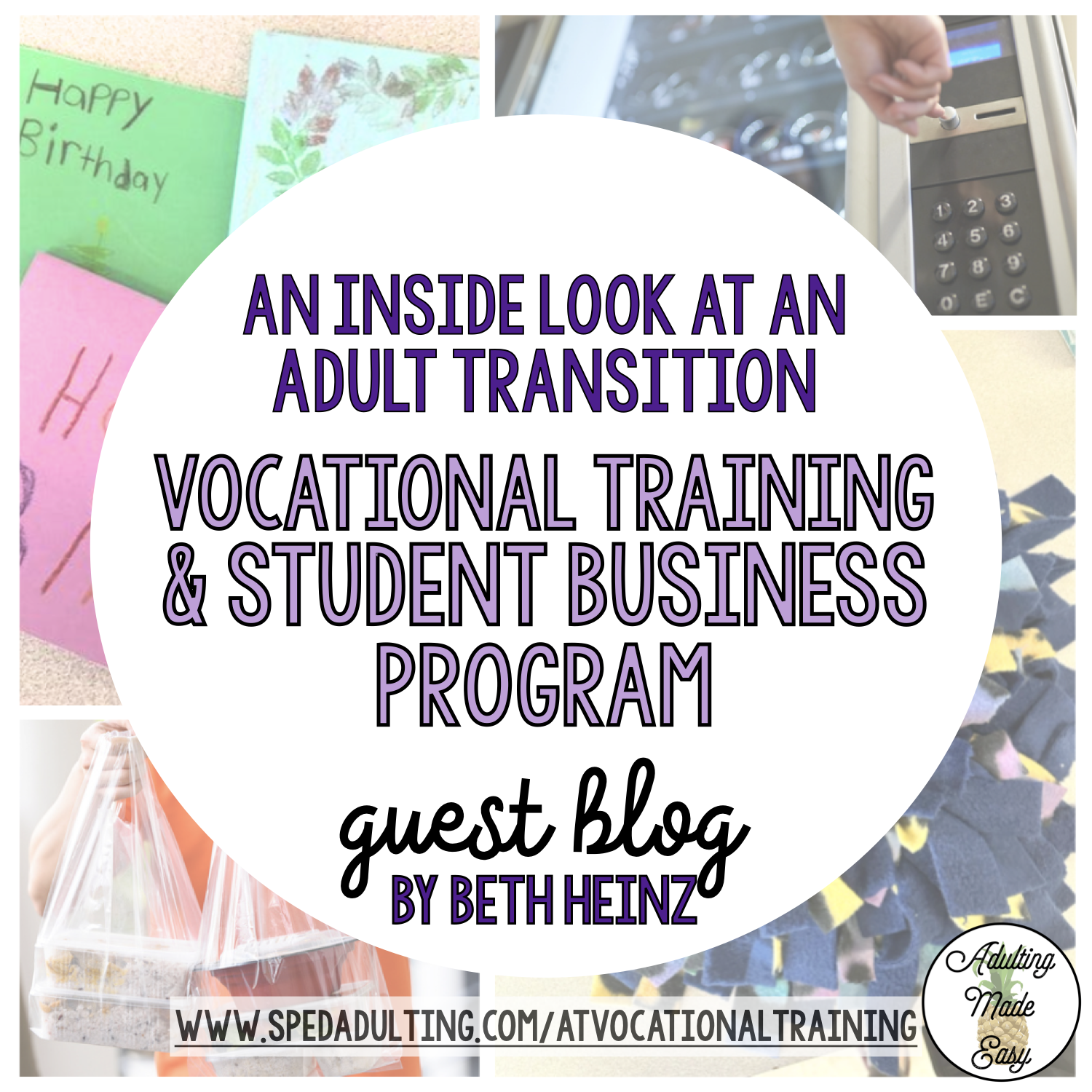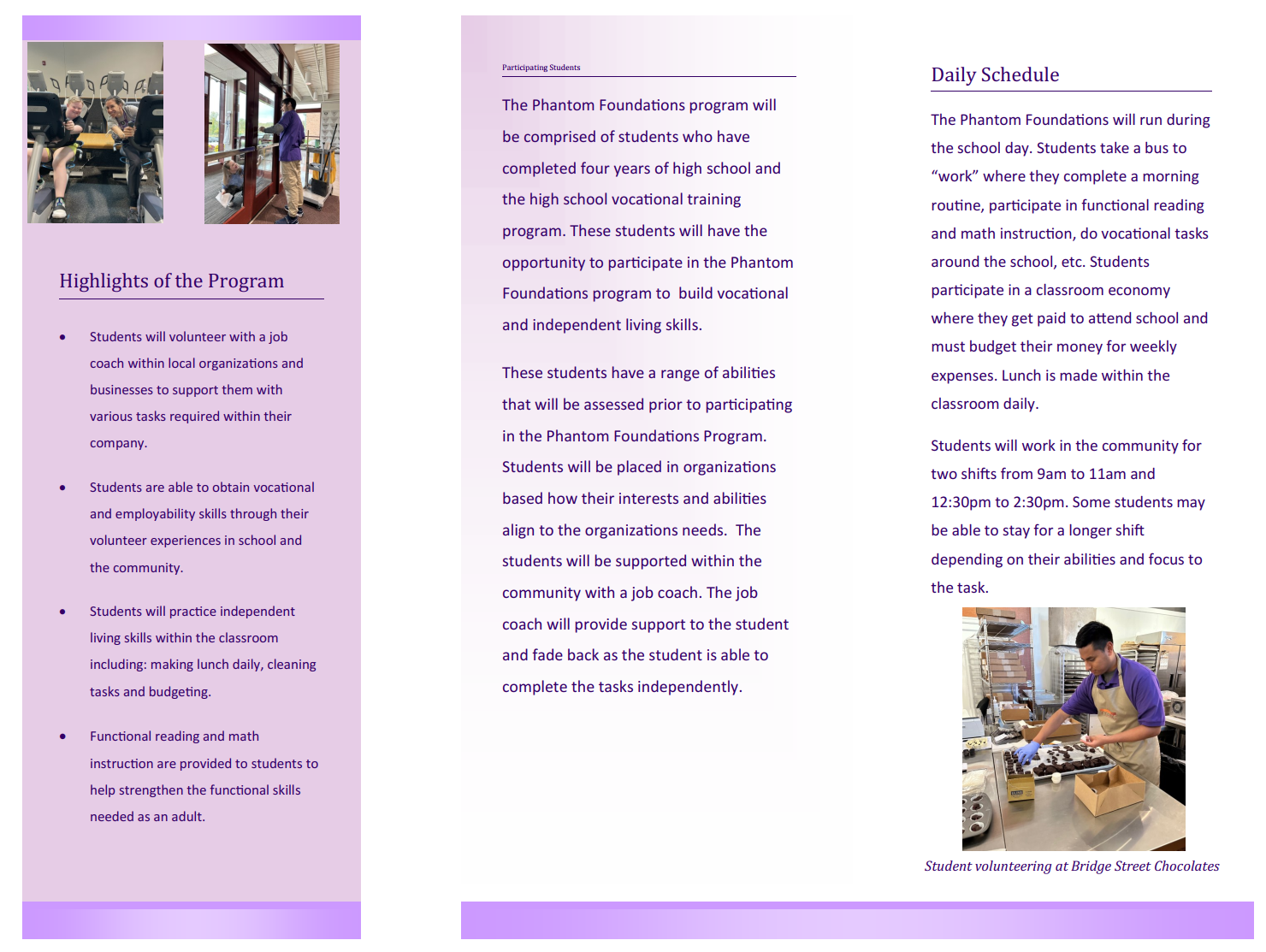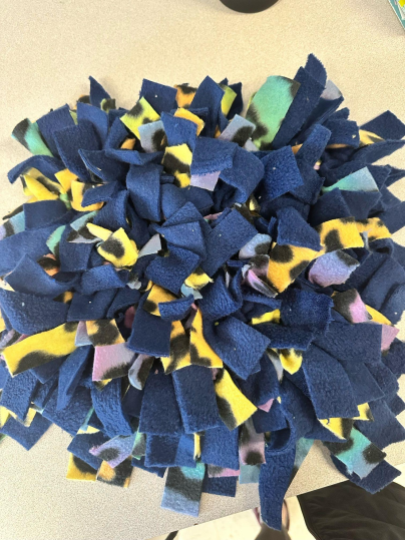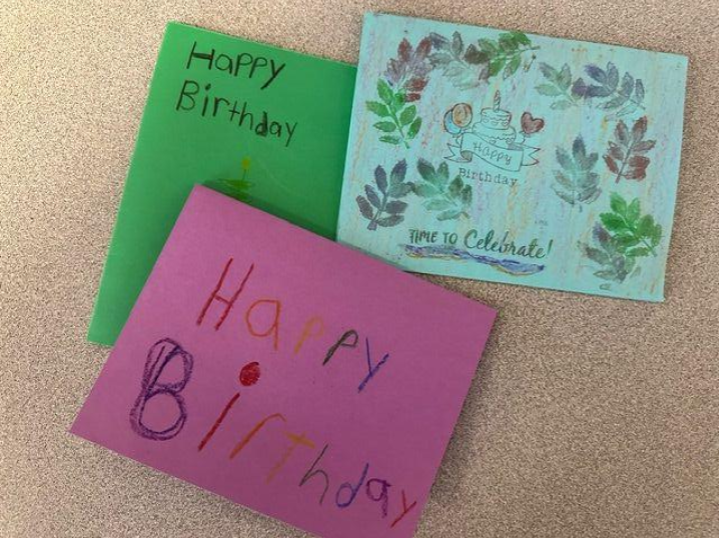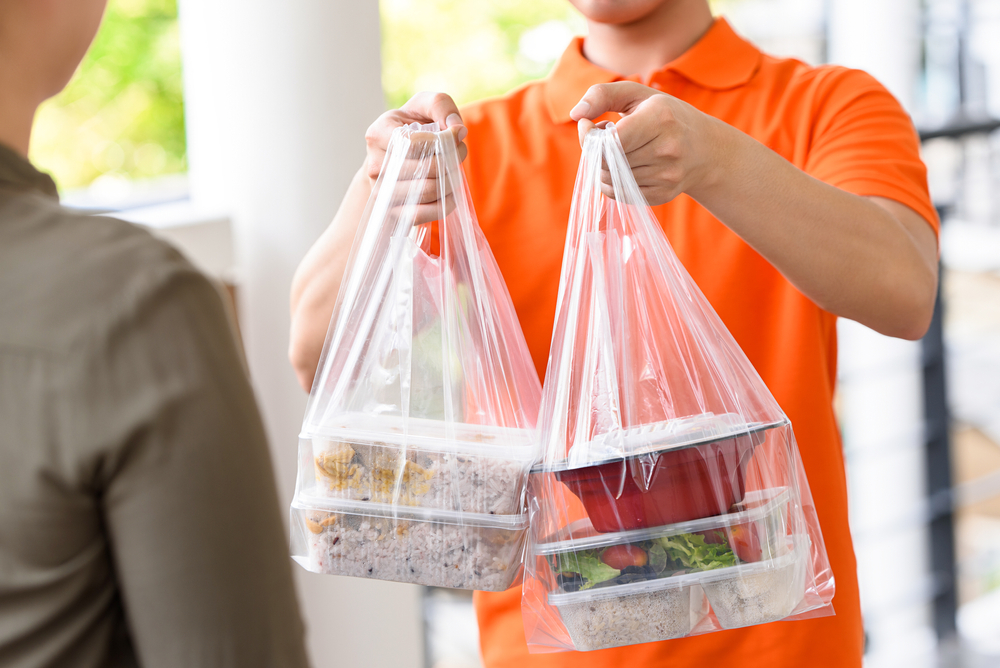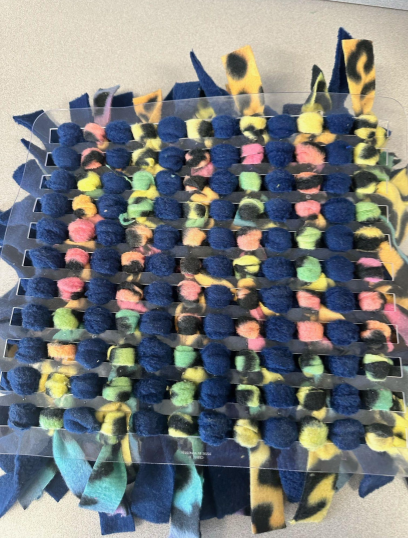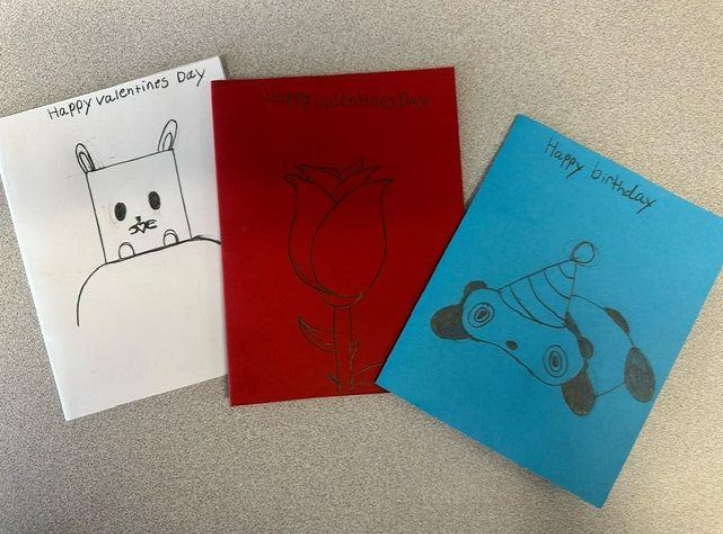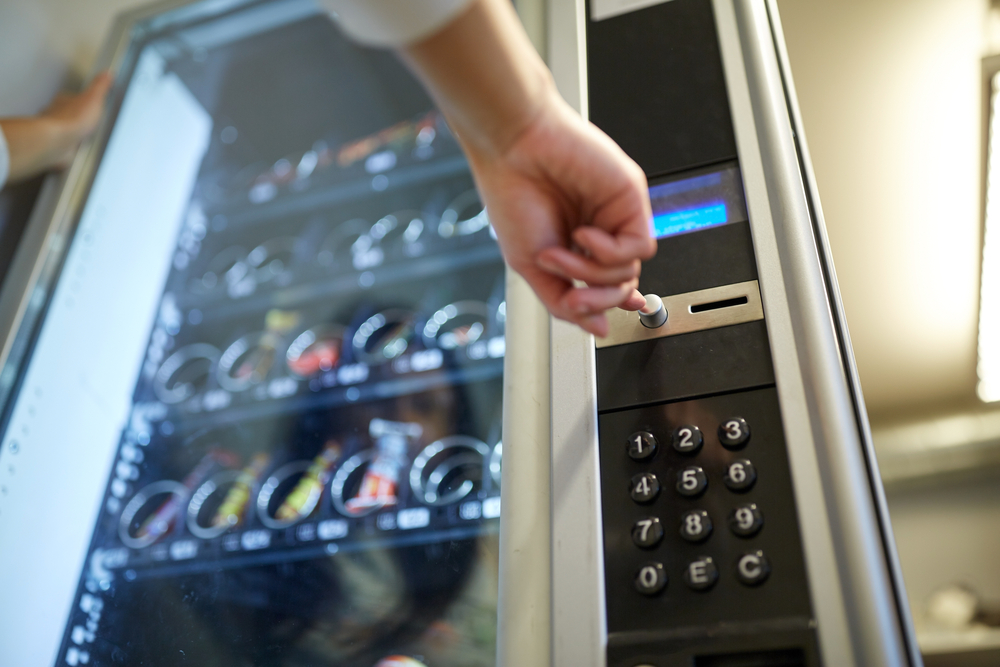Having a student business has SO MANY benefits. Depending on what your product or service is, you have the opportunity to practice independence, money math, cooking, responsibility, and so much more! In this series, various guest bloggers (teachers & special educators) will share their tried and true experience of running a student business for special education students. Hopefully, these posts will give you some great ideas or inspire you to start a classroom business of your own to teach students valuable vocational & life skills! Up next is an adult transition program that started a vocational training program with several student business enterprises!
About The Guest Blogger:
Beth Heinz, Transition Coordinator, and Phantom Foundations Founder. I have been teaching since 2012 and really started on focusing on transition for low-incidence students in 2016 when I got my current job.
How The Business/Program Got Started:
The Phantom Foundations program is a program for individuals who need more vocational training (typically individuals with low-incidence disabilities like Autism and Intellectual/Developmental Disabilities) who have completed 12th grade. Students range in age from 18 to 21 years old. This program is built to simulate life after high school. The students will remain in the classroom apartment most of the day. Within the classroom, students will have leisure time, work tasks, and chores to complete. This is a full-year program that runs following the school day.
Administration:
This program took a lot of work to get off the ground. I had to do presentations to the supervisor of secondary education, the supervisor of student services, the high school principal, the school board, and the superintendent. We then had to sell the program to incoming parents and parents who had students outplaced in other programs. We had to find a classroom that we could convert into an apartment where students could cook, clean, and do personal hygiene without disrupting the high school classes.
In addition, I had to make connections with many of our community partners and ensure that we had insurance coverage for our students working in the community and not increase liability for our community partners. All in all, this took the better part of last school year and the summer to be set up for this fall. In addition, we had to create a new position – job coach – and train them before we were able to take students into the community to work with students.
Supplies:
A lot of the materials we use for our projects are found on local Facebook gifting websites where we can get items for free. We have found a lot of fleece for our snuffle mats on these sites and have collected stamps and ink pads from these sites as well. We shop clearance sales at Michael’s for card stock or Amazon for the cheapest items we can find. For the snuffle mats, we buy sink mats at the dollar store for our base instead of buying fancier sink mats.
Here is what we charge for each item we make:
- Snuffle Mats – $15 (cost about $1 if using dollar store mats)
- Greeting cards – $1 per card (cost about $0.05)
- Dog treats – $2 (cost about $0.50) – we will sell by weight – this is a new venture for us
- Dog Bandanas – $5 (cost hopefully free) – new venture
(these are our snuffle mats front and back)
(a sample of our greeting cards)
Student Tasks/The Businesses:
When students are not at work, they are practicing vocational and independent living skills in school. The program is responsible for purchasing it’s groceries to feed the students lunch daily. To do this, we had to begin offering our services for money. Some of the things we do to raise money are listed below in addition to selling our homemade crafts and treats.
Faculty Lunch Business
Each month, we organize a lunch for the high school faculty and district office staff. We advertise this by sending out an email with the link and providing information about where the money we raise goes to.
- Students have to research the cost of lunch and then build in a profit margin for us.
- They practice calling the restaurant to put in our order.
- Then we deliver the lunch with sides and drinks to the faculty who have ordered. So far we have served the faculty pizza, soup, Chick-Fil-A and hoagies for lunch. Staff completes an order form with the type of lunch they want, the side and drink they choose.
- Students will collect the money from the teachers and provide/calculate change as necessary.
- We have a student call to order the lunch from the restaurant we chose and ask for discounts for fundraising.
- Then the students read off the order forms similar to a kitchen and deliver to the teachers.
Phantom Furry Friend Business
Students have made dog toys called snuffle mats where you can hide treats for dogs within fleece that is knotted around a sink mat with holes in it. Staff can put an order in for these via an online form or through email.
- Students have started experimenting with dog treats as well. Students researched various dog treat recipes and picked a few to try.
- They mix the ingredients and bake the treats.
- Then they weigh the treats and bag them for sale.
- We are hoping to soon have students cut fabric into triangles to make bandanas for our Furry Friends.
We have placed QR codes in all the organizations we partner with so their clients can order our products!
Greeting Cards Business
We sell greeting cards to faculty and staff for any occasion. Staff can come and get a greeting card or email with specific requests. This year we sold Christmas cards to the high school administrators for every teacher at the high school!
- Students hand-make greeting cards.
Vending Machines Business
*Finally, we run the vending machines in the district office and the high school.
- We are responsible for purchasing, stocking the items, and collecting the money.
- Any money we make on the vending machine is ours, so we talk about what sells well and how we can price items to make money by examining unit price, total cost, etc.
Staff/Student Time Commitment:
- Staff don’t spend a lot of time outside of the school day on these projects. Most is done within school hours and academic time. The only time staff spend on the projects outside of school is scanning Facebook groups for free items that we could use or cutting fleece (in the beginning of the year) into strips we can use for the snuffle mats.
- Once a year we spend 2 hours at a transition fair selling snacks and our products that we make!
My job coaches are amazing and work hard during the school day to complete all the vocational tasks we have planned. They are in the community with students and working in the classroom to build skills that will help students be more successful as adults. It is important to surround your program with people who care, have ideas on how to make the program more successful, and will put in the work.
Additional Advice/Info:
The best piece of advice I can offer is to be persistent. To get everything up and moving, I had to ask questions and follow up with people multiple times. I made a joke with community organizations that I was a bad penny and kept turning up – but it worked! People wanted to help and having the insurance policy protect the volunteers made our organizations feel comfortable allowing them to come in and work. If someone said no, I would brainstorm ways around it and partner with them to help the organization or stakeholder feel comfortable.
The other piece that helped me was parent buy-in. Parents needed to understand we didn’t focus just on academics in the program but on applying skills to real-life tasks and giving them opportunities to practice the skills. When I got stuck, my parents would back me up because of the buy-in they had and the belief this program would be successful.
